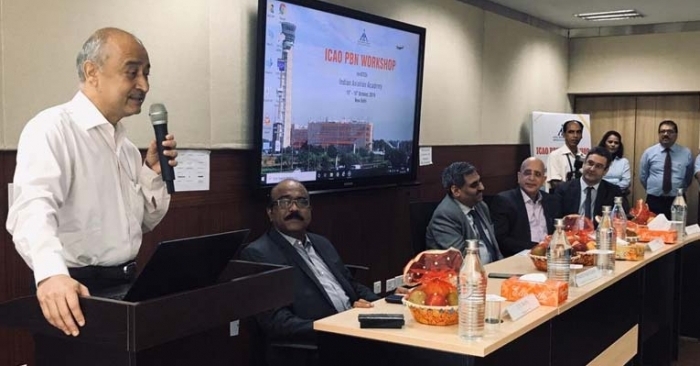Pradeep Singh Kharola inaugurates ICAO workshop for air traffic control officers
October 16, 2019: Pradeep Singh Kharola, secretary to the ministry of civil aviation, on Tuesday inaugurated the International Civil Aviation Organization’s (ICAO) Performance-Based Navigation (PBN) workshop for air traffic control officers (ATCOs) in New Delhi.

October 16, 2019: Pradeep Singh Kharola, secretary to the ministry of civil aviation, on Tuesday inaugurated the International Civil Aviation Organization’s (ICAO) Performance-Based Navigation (PBN) workshop for air traffic control officers (ATCOs) in New Delhi.
Instructors Raphael Guillet and HuHo Ha from ICAO Sub-Regional Office, Beijing are providing the training on October 15-18, 2019 at the Indian Aviation Academy (IAA), Vasant Kunj. The workshop in collaboration with Airport Authority of India (AAI) is being attended by officers from CAA Nepal, DGCA India and air traffic controllers from 44 airports in India.
While welcoming the participants and ICAO Instructors, Kharola stressed upon the need for AAI to implement PBN in accordance with ICAO plans and national needs.
Secy, @MoCA_GoI today inaugurated ICAO's Performance-Based Navigation Workshop organised by #AAI in the presence of Chairman, #AAI, Chief and regional officer ATM of @icao sub-regional office, Mem (Ops), Mem (ANS) & other officials. ATCOs from 43 airports and Nepal also took part pic.twitter.com/0NOOOdcud8
— Airports Authority of India (@AAI_Official) October 15, 2019
As an integral part of air traffic management and an important element in Aviation System Block Upgrades (ASBUs), the implementation of PBN is the highest air navigation priority for ICAO.
The workshop will enable the ATC Officers to appreciate as to how PBN enables:
• flexible route structures which allow more efficient flight paths and result in reduced fuel burn and emissions
• access to airspace and runways that are limited or not achievable by conventional navigation aid (NAVAID) infrastructure
• improved safety through more straight in-instrument approaches with vertical guidance, therefore, increased airspace capacity
• increased airport accessibility, hence, more efficient operations
• reduced infrastructure costs (for example the reduction of conventional procedures (sensor-specific VOR or non-directional radio beacon) and routes enables a reduction in legacy infrastructure
• reduced environmental impact through lesser fuel burn and lesser CO2 emissions
Anuj Aggarwal, Chairman, AAI, I. N. Murthy, Member (Operations), AAI and Vineet Gulati, Member (Air Navigation Services), AAI were also present during the inauguration.



